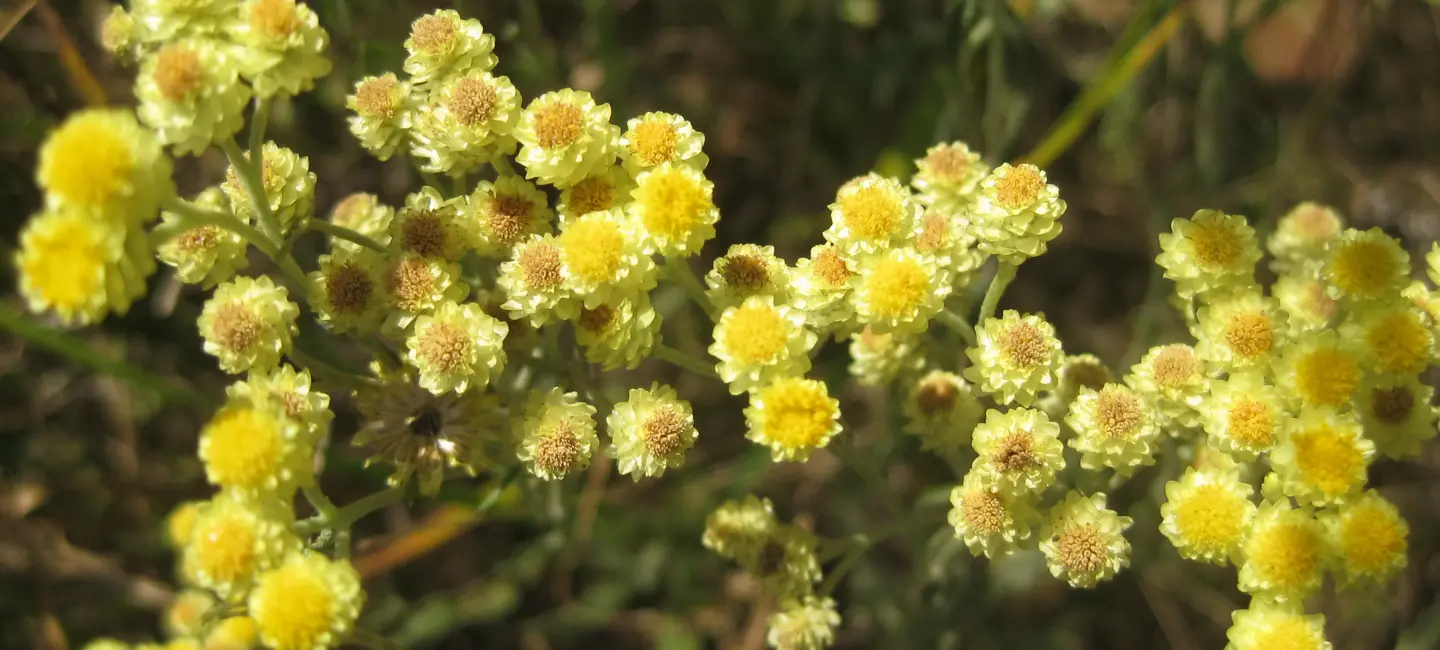
Sandy everlasting (Helichrysum italicum) is a shrub found in sandy, dry, and stony areas around the Mediterranean region. It has a strong smell like curry.
Sandy everlasting contains chemicals that might help fight bacteria, reduce swelling, act as antioxidants, and reduce blood sugar levels.
People use sandy everlasting for cough, scars, wound healing, and many other purposes, but there is no good scientific evidence to support these uses.
Don't confuse sandy everlasting with immortelle. These are not the same.
Is It Effective?
There is interest in using sandy everlasting for a number of purposes, but there isn't enough reliable information to say whether it might be helpful.
Is it Safe?
When taken by mouth: Sandy everlasting is commonly consumed in foods. But there isn't enough reliable information to know if it is safe to use in larger amounts as medicine.
Special Precautions & Warnings:
Pregnancy and breast-feeding: Sandy everlasting is commonly consumed in foods. But there isn't enough reliable information to know if it safe to use in larger amount as medicine while pregnant or breast-feeding. Stay on the safe side and stick to food amounts.
Blockage of the bile ducts: Don't use sandy everlasting if you have this problem. Sandy everlasting stimulates bile production, and that could make the blockage worse.
Allergy to ragweed, daisies, and related plants: Sandy everlasting may cause an allergic reaction in people who are sensitive to the Asteraceae/Compositae plant family. Members of this family include ragweed, chrysanthemums, marigolds, daisies, and many others.
It is not known if Sandy Everlasting interacts with any medicines. Before taking Sandy Everlasting, talk with your healthcare professional if you take any medications.
There are no known interactions with herbs and supplements.
There are no known interactions with foods.
There isn't enough reliable information to know what an appropriate dose of sandy everlasting might be. Keep in mind that natural products are not always necessarily safe and dosages can be important. Be sure to follow relevant directions on product labels and consult a healthcare professional before using.
Common Shrubby Everlasting, Eternal Flower, Everlasting, Fleur de Pied de Chat, Gnaphalium angustifolium, Gnaphalium italicum, Gnaphalium orientale, Gnaphalium stoechas, Goldilocks, Harnblumen, Hélichryse, Hélichryse d'Orient, Hélichryse Rouge, Helichrysum, Helichrysum augustifolium, Helichrysum italicum, Helichrysum orientale, Helichrysum stoechas, Helicriso, Immortelle, Immortelle d'Italie, Katzenpfotchenbluten, Perpetuas das areias, Perpetuas de Italia, Sardinian Dwarf Curry Plant, Yellow Chaste Weed.
Information on this website is for informational use only and is not intended to replace professional medical advice, diagnosis, or treatment. While evidence-based, it is not guaranteed to be error-free and is not intended to meet any particular user’s needs or requirements or to cover all possible uses, safety concerns, interactions, outcomes, or adverse effects. Always check with your doctor or other medical professional before making healthcare decisions (including taking any medication) and do not delay or disregard seeking medical advice or treatment based on any information displayed on this website.
© TRC Healthcare 2024. All rights reserved. Use and/or distribution is permitted only pursuant to a valid license or other permission from TRC Healthcare.
